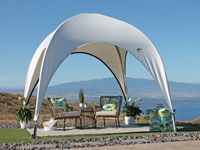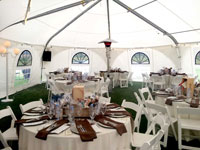The new school year is finally upon us, and so is another debate.
Should we reopen schools, and if so, how? Should we maintain virtual schooling despite its many challenges and pitfalls? How will our classrooms look and operate in the age of social distancing?
COVID-19 was never an easy thing to deal with, but staying home was straightforward. When it comes to school, the answer’s not so straightforward. Touching on that subject, the coronavirus is one of many reasons why we need smaller class sizes.
Where and how we learn is essential. That’s why this is such a hotly debated topic — it’s undeniably important.
In this guide, we tackle one part of the conversation: the size of classrooms.
Why are smaller class sizes better for students (and teachers)? How many teachers feel that they perform better with smaller class sizes? And how can we achieve these smaller classes without sacrificing the education of our future generations?
Keep reading for some invaluable insight, whether you’re a student, parent, teacher, or faculty member.
Why Do We Need Smaller Class Sizes?
As of 2020, the national average for the public school student:teacher ratio was at 16:1. So, for every sixteen students, you have one teacher.
This number can certainly range based on several factors — location, public vs. private school, income level, population, and much more.
For example, the lowest ratio was found in the Virgin Islands at an impressive 11:1. The highest was found in Utah, with an astonishing ratio of 34:1. Here in Alaska, our average ratio in public schools is about 17:1, proving that we’re not that bad, but also not that great.
But what does it matter? Do more kids equal a less superior learning experience? In fact, it does.
Next, we break down why smaller classrooms are better.
Reduces the Transmission of COVID and the Flu
According to the Centers for Disease Control and Prevention (CDC), the best possible solution to reducing transmission is to host online school. Of course, after a few weeks of that in the early stages of COVID, teachers, parents, and students alike discovered a slew of problems, from internet connections to loneliness to a lack of focus.
The next best thing?
Small, in-person classes — with an emphasis on the word small. The same students can stick together all day long (rather than transferring from room to room, teacher to teacher), which reduces the risks. Additionally, the smaller the classroom, the more room there is for social distancing measures.
With a smaller class size, students can stay 6 feet apart, which is the CDC’s recommendation. Additionally, students should also not share objects, such as school supplies. This issue is easier to tackle when the classroom size is reduced.
The teacher also has a better opportunity to observe the classroom, reinforcing these distancing guidelines, as well as promoting proper hygiene (i.e., hand-washing) and respiratory etiquette. The larger the class, the harder it is to reinforce any type of behavior.
Improves the Learning Experience for Children of Any Age
Simply put, the more students that are in a classroom, the more difficult it is for any student to learn. In any school, students and teachers are at the whim of their peers. For example: if someone is misbehaving, taking the teacher’s attention away, how are the other students supposed to focus and learn?
The smaller the class size, the more one-on-one time each student is bound to get. This individual approach enhances their learning experience, ensuring they don’t become one fish lost in a sea of many. A teacher is then better equipped to handle a variety of students, behaviors, and learning styles.
Allows Teachers to Instruct in a More Personalized Manner
Children learn in a variety of ways. When you get a group of children together, you’re bound to have some diversity, and one singular approach won’t work for everyone. Because of this, it’s crucial for a teacher to provide a personalized experience to a certain degree.
Different types of learning include linguistic, spatial, interpersonal and intrapersonal, and much more. If a teacher is tasked with taking care of 30+ students, how can he or she bring an individual approach to their teaching? The answer is simple: they can’t.
With a smaller class size, a teacher can learn more about each individual’s way of learning and cater to that in a way that’s conducive and non-distracting to others.
Fosters Relationships Between Students
With a small setting comes a community feeling. When there are up to 30 or more students in a classroom, it’s only natural that cliques will form, some students will get isolated, and bonding may be harder to accomplish.
In a smaller class size, students can form close relationships with their peers. Seeing and interacting with the same individuals daily mimics “adult” interactions — work, home life, etc. Rarely do adults find themselves in a room with over 30 people, unless at an event or some special occasion.
Provides More Time for Teaching
So, what do fewer distractions, behavioral issues, and students mean for the teacher?
It means they have more time to do their job — teaching. With smaller classroom sizes, the problems are easier to mitigate, and the successes easier to double-down on. If a teacher spends less time reprimanding, organizing, and shuttling a large group of students from place to place, they have more time to focus on the critical things like education, lesson planning, and more.
In fact, studies have proven that smaller classroom sizes, such as 18 or less, produce the most considerable benefits, especially to children of lower-income areas or minorities. Teachers were able to engage more with students in those classroom sizes, which therefore boosted the students’ engagement in learning exercises.
Smaller classrooms have even translated to more positive life outcomes, such as staying out of juvenile detention, lower rates of pregnancy, higher rates of graduation and/or college, and more!
How Can Schools Reduce Class Sizes (Preferably Without Breaking the Bank)?
By now, you understand the many benefits of smaller class sizes. However, with such limited school funding, how can a school just, well, build more buildings?
In all honesty, many can’t. Many schools can hardly afford to make ends meet at their current state. Therefore, spending the time and money to construct new buildings is out of the question.
But there is an excellent solution — one that offers many cost-saving benefits and is both practical and timely: portable, aka modular classrooms.
First, constructing a new building takes time, meaning it can’t get used for months to years. If schools need more space now, that’s not a viable solution. And often, a school won’t know how many students will enroll until closer to the start of school, giving them little to no time to start construction.
Since modular school buildings are pre-made and ready to get positioned, they take no time at all to expand a school’s setting. Often, it’s as simple as contacting a provider and getting the portable classroom set up on campus.
Other benefits of portable classroom buildings include less pre-construction site-work (and costs), the ability to move them, quickly scale to a school’s growth, provide students and teachers with more outdoor time, and more. Have you ever noticed how hard it is to keep an entire building cold in the summer or warm in the winter? With only one room to consider, this issue is nonexistent.
> Read More! Portable Classrooms for Reopening Schools This Fall
There’s No Doubt About It: When It Comes to Classrooms, Smaller Is Better
Whether you’re a student, parent, teacher, or faculty member, we know this issue hits close to home for many families. Smaller class sizes are better for both the student and teacher — which ultimately makes for a better learning opportunity and a better community. Education is of utmost importance, and how we receive that knowledge is just as crucial of a consideration.
As mentioned, one fantastic way for schools to reduce classroom sizes on a budget is to invest in the cost-saving benefits of modular school buildings. This method allows schools to quickly meet the immediate needs and later scale with their growth. Additionally, the level of education stays high-quality, with no sacrifice to learning.
It’s a win-win-win!
At Alaska Structures®, we can help the school in your area achieve these benefits. Contact us today to request a quote for portable classroom(s). We look forward to helping the education system in your region soar to new heights.
Telephone: +1-907-344-1565
Or use our online contact form and submit your request.

















































































Leave a Reply